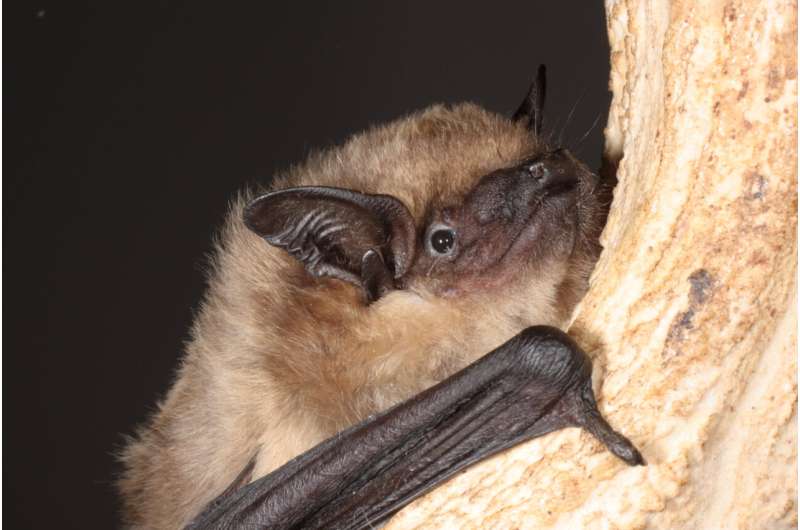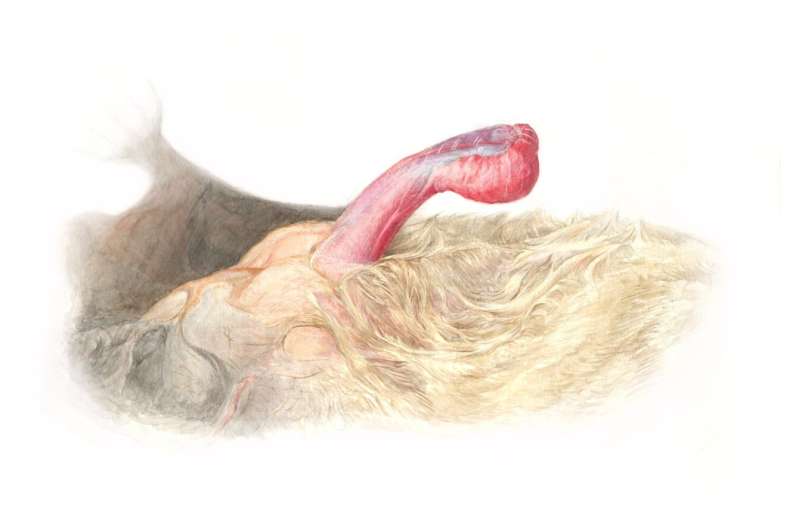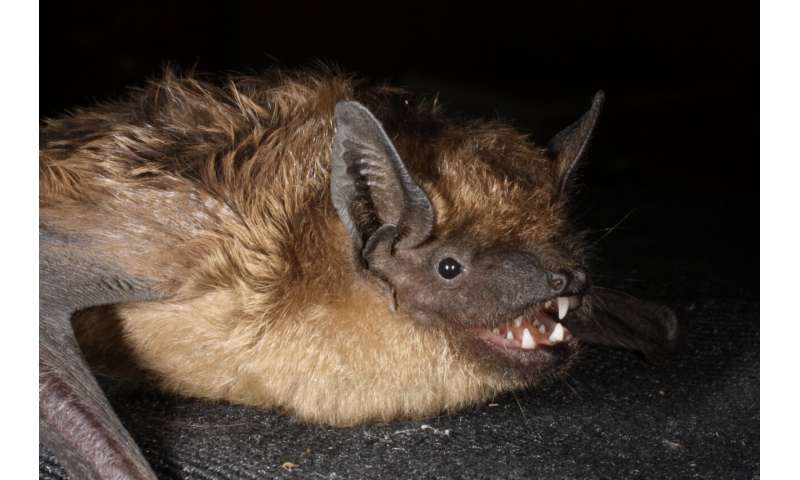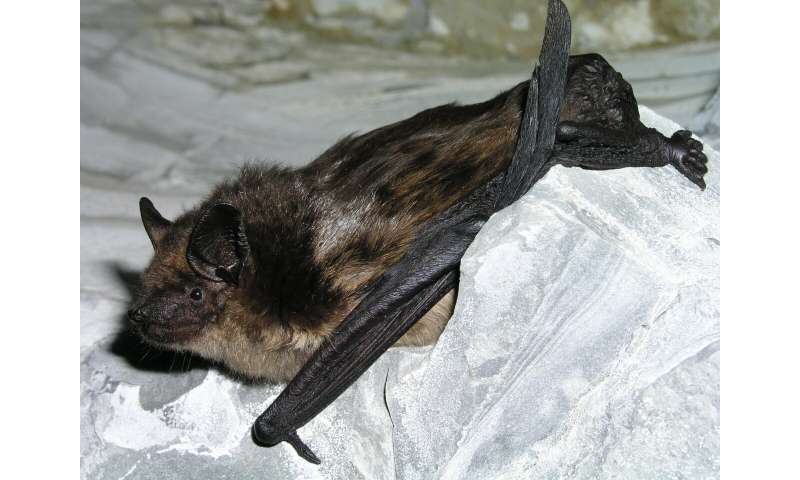This article has been reviewed according to Science X's editorial process and policies. Editors have highlighted the following attributes while ensuring the content's credibility:
fact-checked
peer-reviewed publication
trusted source
proofread
These bats use their penis as an 'arm' during sex but not for penetration

Mammals usually mate via penetrative sex, but researchers report Nov. 20 in the journal Current Biology that a species of bat, the serotine bat, (Eptesicus serotinus) mates without penetration. This is the first time non-penetrative sex has been documented in a mammal.
The bats' penises are around seven times longer than their partners' vaginas and have a "heart-shaped" head that is seven times wider than the vaginal opening. Both the penises' size and shape would make penetration post-erection impossible. The researchers show that, rather than functioning as a penetrative organ, the bats use their oversized penises like an extra arm to push the female's tail sheath out of the way so that they can engage in contact mating. This behavior resembles "cloacal kissing" in birds.
"By chance, we had observed that these bats have disproportionately long penises, and we were always wondering 'how does that work?'" says first author Nicolas Fasel of the University of Lausanne. "We thought maybe it's like in the dog where the penis engorges after penetration so that they are locked together, or alternatively maybe they just couldn't put it inside, but that type of copulation hasn't been reported in mammals until now."
Very little is known about how bats have sex, and most previous observations of bats mating have only perceived the backs of mating pairs. In this study, the researchers were able to observe the bats' genitalia during copulation by using footage from cameras that were placed behind a grid that the bats could climb on.

Fasel collaborated with a bat rehabilitation center in Ukraine that opportunistically filmed mating pairs and with a bat enthusiast and citizen scientist, Jan Jeucker, who filmed hours of footage of serotine bat in a church attic in the Netherlands. Altogether, the team analyzed 97 mating events—93 from the Dutch church and four from the Ukrainian bat rehabilitation center.
-

Photo of a serotine bat. Credit: Alona Shulenko -

Photo of a serotine bat. Credit: Olivier Glaizot
The video recordings revealed that the bats do not engage in penetrative sex. The researchers did not observe penetration at any point during the recorded mating events and noted that the erectile tissues of the penis were enlarged before they made contact with the vulva.
During mating, the male bats grasped their partners by the nape and moved their pelvises (and fully erect penises) in a probing fashion until they made contact with the female's vulva, at which point they remained still and held the females in a long embrace. On average, these interactions lasted less than 53 minutes, but the longest event extended to 12.7 hours.
Following copulation, the researchers observed that the female bats' abdomens appeared wet, suggesting the presence of semen, but further research is needed to confirm that sperm was transferred during these putative mating events.
The researchers also characterized the morphology of serotine bat genitalia by measuring the erect penises of live bats that were captured as part of other research studies (serotine and other vesper bats are conveniently known to get erections under anesthesia) and by performing necropsies on bats that died at bat rehabilitation centers.
Their measurements showed that, when erect, serotine bat penises are around seven times longer and seven times wider than serotine bat vaginas, and about a fifth as long as the bats' head-body length. The bats also have unusually long cervixes, which could help female bats select and store sperm.
The researchers speculate that the bats may have evolved their oversized penises in order to push aside the female bats' tail membranes, which females may use to avoid sex.
"Bats use their tail membranes for flying and to capture the insects, and female bats also use them to cover their lower parts and protect themselves from males," says Fasel, "but the males can then use these big penises to overcome the tail membrane and reach the vulva."
Next, the researchers plan to study bat mating behavior in more natural contexts, and they are also investigating penis morphology and mating behavior in other bat species.
More information: Mating without intromission in a bat, a novel copulatory pattern in mammals., Current Biology (2023). DOI: 10.1016/j.cub.2023.09.054. www.cell.com/current-biology/f … 0960-9822(23)01304-0
Journal information: Current Biology
Provided by Cell Press




















